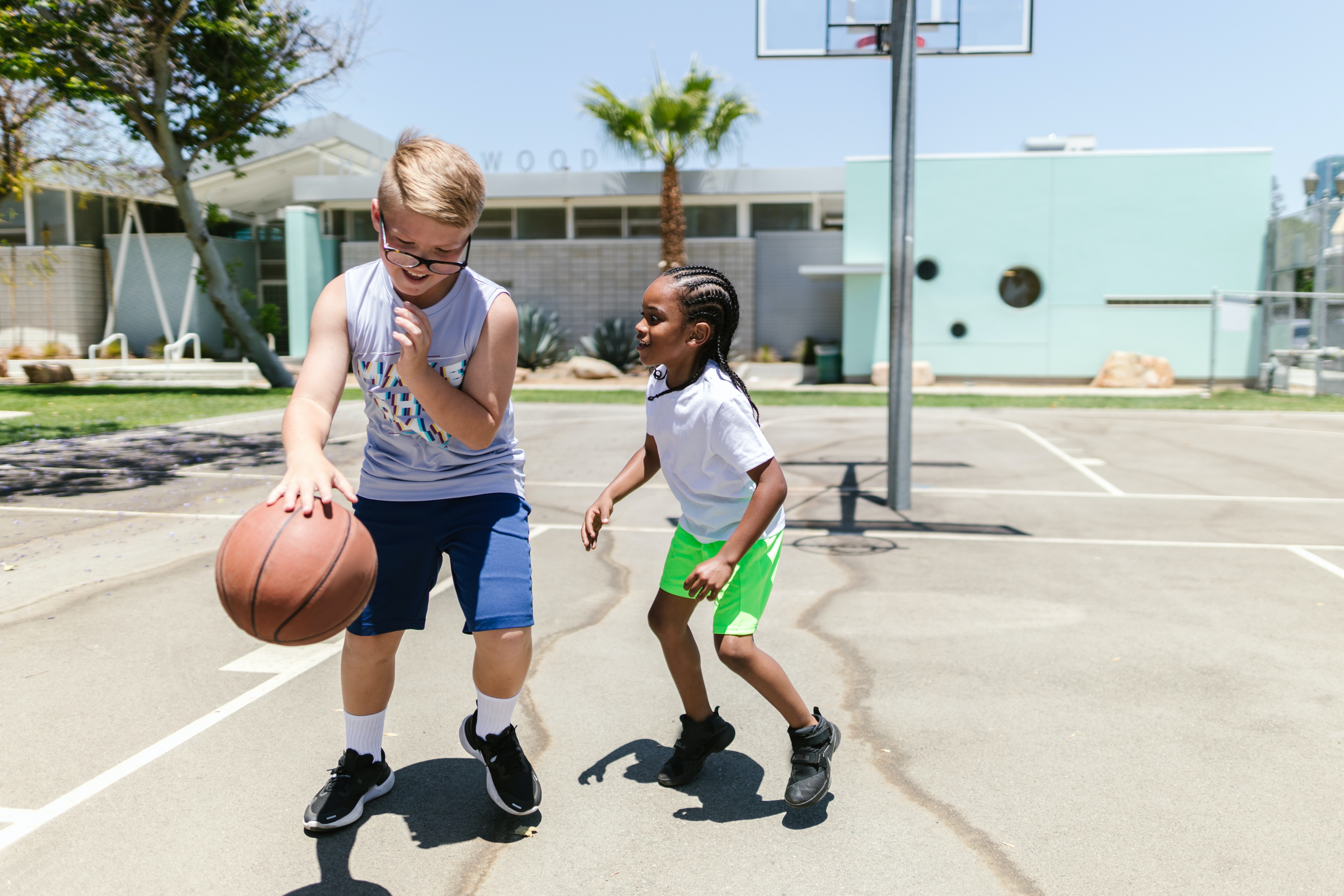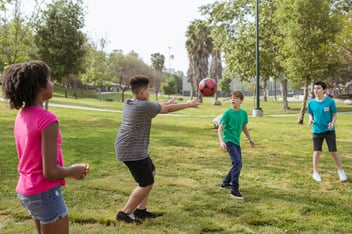When Should Children Begin Exercising Their Muscles?
 While chronological age has traditionally been used to determine starting participation in sports teams (e.g., under-16s), it is evident that disparities in growth and maturity (e.g., height, weight, and strength) become apparent between the ages of 6 and 7. Due to biological maturity and the relative age effect, there can be big differences in height and ability between kids of the same chronological age. This can make it hard and unfair to make programs for kids based on their age.
While chronological age has traditionally been used to determine starting participation in sports teams (e.g., under-16s), it is evident that disparities in growth and maturity (e.g., height, weight, and strength) become apparent between the ages of 6 and 7. Due to biological maturity and the relative age effect, there can be big differences in height and ability between kids of the same chronological age. This can make it hard and unfair to make programs for kids based on their age.
Even though there is no minimum age to join a program for training young people to resist, all participants must have the following skills:
- accept and comply with directives
- understand fundamental safety concerns
- demonstrating competent balance and postural control
Therefore, childhood strength training could begin as early as 5–6 years of age if these key features are present. It has been demonstrated that children of this age can enhance their muscular fitness through exposure to fundamental resistance training activities involving body weight, free weights, machine weights, and elastic resistance bands.
If children are able to participate in organized
In addition, they are also able to engage in progressive strength and conditioning as part of a long-term approach to developing athleticism. It is critical to understand that basic strength and conditioning begin with bodyweight exercises, the use of elastic-resistance bands, and other low-level strength exercises and modalities rather than heavy back squats.
Even though it is well known that adolescent strength training is a safe and effective strategy for improving juvenile physical literacy, additional study is still needed to elucidate the precise pathways that contribute to the development of both physical capacities and overall health. The following issues would be of further interest due to a lack of longitudinal and well-controlled empirical research and knowledge of the complex and dynamic progression that occurs during childhood and adolescence:
- To understand the specific pathways behind the health benefits of juvenile resistance exercise (e.g., reduced cardiovascular disease risk, enhanced bone health),
- To determine the optimal period of juvenile resistance training to maximize health benefits (e.g., cardiovascular disease risk, bone health).
- To improve the long-term training adaptations, we need to explore the potential benefits of resistance training for kids with a variety of medical issues, such as obesity, diabetes, and physical and/or intellectual disabilities.
Strength training is currently a popular form of exercise for children and teenagers. Despite past worries about the safety and efficacy of juvenile resistance training, scientific and clinical data supports participation in well-designed and thoroughly guided youth resistance training programs. These programs have been found to improve the health and fitness of adolescents.
In conclusion, it is acknowledged that all adolescents should be given training programs tailored to their unique needs within a training atmosphere that is enjoyable and motivating. With the increasing knowledge of how to safely and effectively implement a resistance program for adolescents, more attention has been given to the development and execution of these programs
Some coaches feel that reading one article on strength and conditioning will qualify them as experts. But they are all wrong. Strength and conditioning encompasses a vast array of issues. If you choose to focus solely on youth strength training while ignoring the ocean of other critical issues, you risk being detrimental to your athlete's development and failing to reach your full potential.
If you want to become a competent youth athlete and simplify your life as much as possible, you must read this blog "Essentials of a Good Strength-Training Program for Youth"
REFERENCES
American Development Model (2014). Available at https://www.admkids.com/page/show/910488-what-is-the-american-development-model-. (accessed 2 April 2022).
Baker, J., Cobley, S., Fraser-Thomas, J. (2019). “What do we know about early sport specialization?” High Ability Studies. 20(1), 77-89.
Balish, S.M., McLaren, C., Rainham, D., Blanchard, C. (2019). “Correlates of youth sport attrition: A review and future directions.” Psychology of Sport and Exercise. 15, 429-437.
Balyi, I., Way, R., & Higgs, C. (2013). Long-Term Athlete Development. Human Kinetics: Champaign.
Brenner, J.S. (2016). “Sports specialization and intensive training in young athletes.” American Academy of Pediatrics. 138(3), 1-8.
Barengo, N.C Meneses-Echávez, J.F., Ramírez-Vélez, R., Cohen, D.D., Tovar, G., & Bautista, J.E.C. (2014). The Impact of the FIFA 11+ Training Program on Injury Prevention in Football Players: A Systematic Review. 2015. International Journal of Environmental Research and Public Health, 11(11), pp.11986–12000.
Chaouachi, A., Hammami, R., Kaabi, S., Chamari, K., Drinkwater, E.J. & Behm, D.G. (2014). The combination of plyometric and balance training improves sprint and shuttle run performances more often than plyometric-only training with children. Journal of Strength and Conditioning Research, 28(2), 401–412.
Malliou P, Rokka S, Beneka A, Mavridis G, and Godolias G. Reducing risk of injury due to warm up and cool down in dance aerobic instructors. J Back Musculoskelet Rehabil 20: 29–35, 2017



